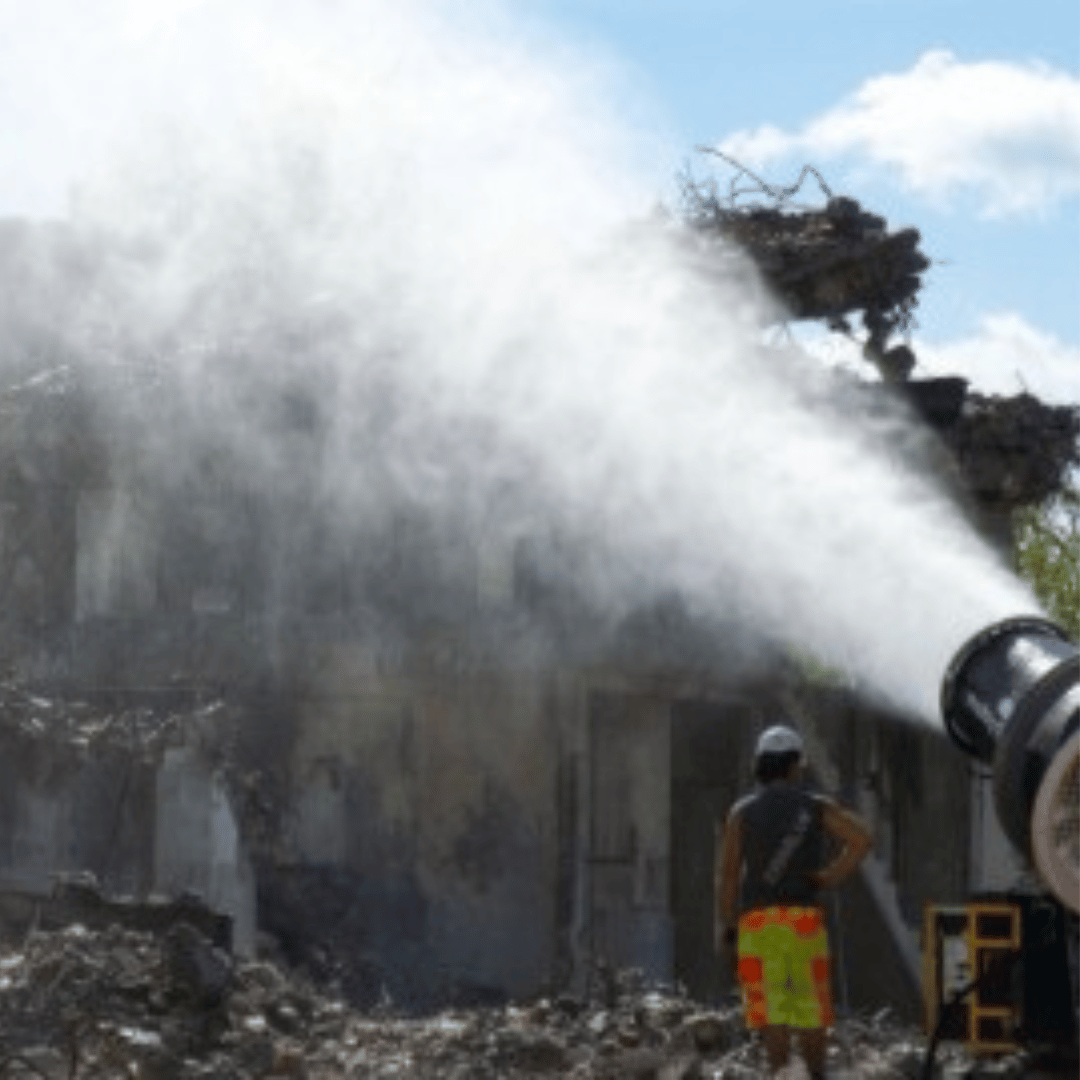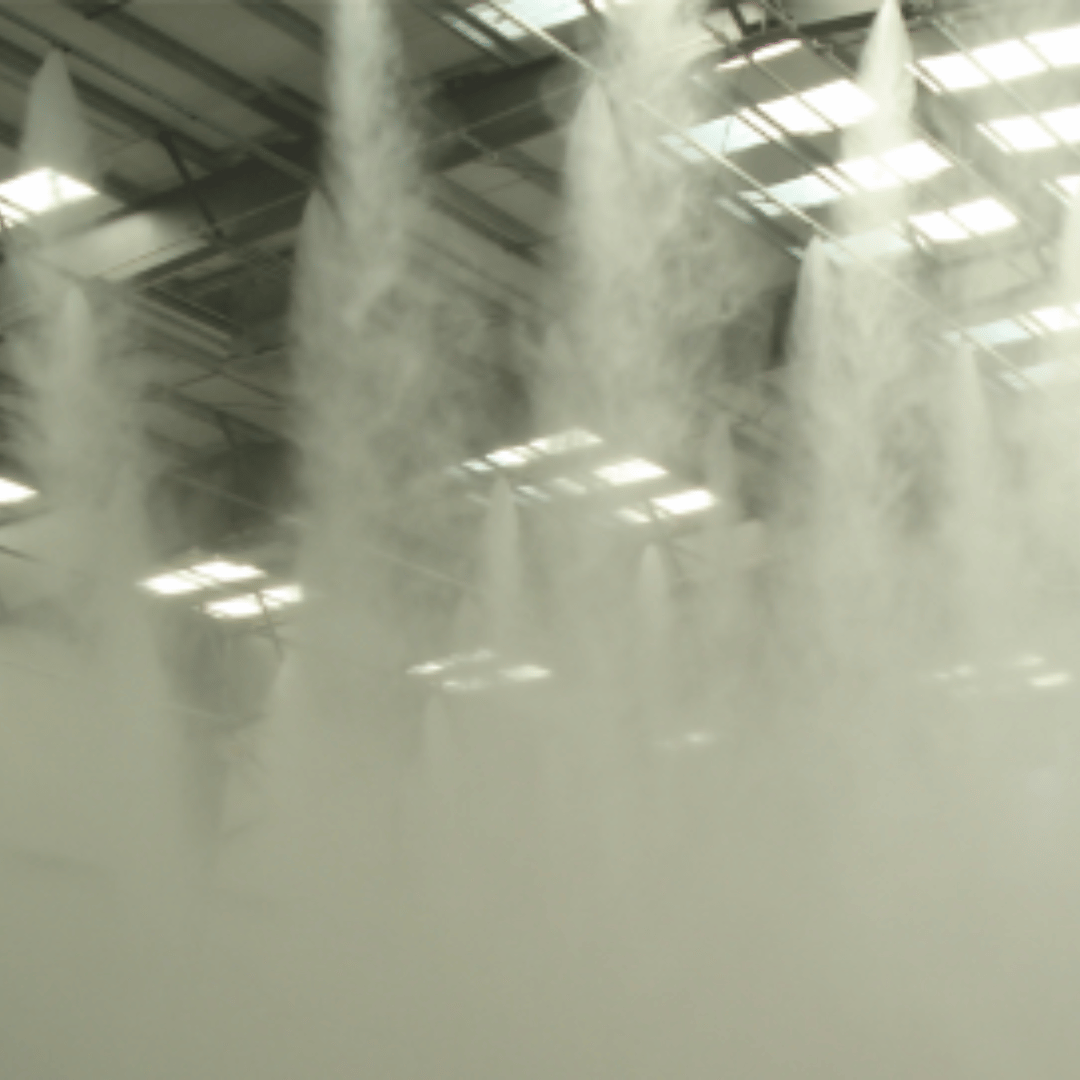KNOWLEDGE
Latest Article
CATEGORY
High-Pressure Pump Industry Trend
12.Jun.2024
Introducing Seven Significant Applications to Misting System: From Mist Cooling to Landscaping
Misting system is a versatile technology that not only provides practical functions such as cooling, humidifying, disinfecting, deodorizing, dust suppression, and fire extinguishing, but also creates beautiful landscape effects. This article will introduce you the seven major applications of misting systems and how they perform in various environments!



Misting systems are progressively assuming a pivotal role in modern living. Whether deployed for cooling, humidifying, disinfecting, deodorizing, dust suppression, fire suppression, or landscape enhancement, misting systems exhibit remarkable versatility. With ongoing technological advancements, the applications of misting systems are poised to expand further, ushering in increased convenience and aesthetic appeal to our lives.
Misting Cooling: A Sustainable and Energy-Efficient New Option
Misting cooling works by the evaporation of released water molecules by the system which removes heat and achieves a cooling effect in the area. This method is particularly suitable for open spaces and environments with high temperatures and low humidity, such as outdoor amusement parks and large outdoor events.When using a misting cooling system, the smaller the mist particles, the faster they evaporate, and the more pronounced in cooling effect. For example, a high-pressure misting cooling system can produce mist particles with an average diameter of about 10 microns, which evaporate before reaching the ground and do not cause discomfort to people. Through using fans to expand the misting range can lower the surrounding temperature by about 4 to 16 degrees Celsius. Furthermore, the operating cost of a misting cooling system is one-tenth that of traditional air conditioning system, offering significant energy-saving and environmental benefits. Further reading: Barbecue with Misting Cooling Solutions
Mist Humidification: Maintaining Optimal Humidity Levels
Micro-mist humidification is an effective way to control environmental humidity. By distributing tiny water droplets evenly in the space, it increases the relative humidity, preventing dryness, cracking, and static electricity. For example, in paper mills, humidification prevents paper from deforming; in textile factories, it maintains fiber elasticity, reducing breakage and static; and in greenhouses and planting sheds, it retains moisture in plants and ensures suitable growth conditions for plants.Compared to regular water sprinkling systems, mist humidification systems can distribute moisture more evenly and achieve the desired humidity levels by adjusting the nozzle diameter and direction.Mist Disinfection and Deodorization: Effective Solutions for Sanitation and Odor Removal
Misting systems are widely used for disinfection and deodorization. Mist disinfection involves adding mildly acidic disinfectants, while micro-mist deodorization uses non-toxic chemical neutralizers or plant-based essential oils. Leveraging the properties of mist, these systems can quickly and evenly penetrate various spaces to achieve the effect of sanitizing or removing odor molecules.This method is suitable for various settings, including solid and liquid waste treatment plants, sewage treatment facilities, landfills, and poultry and livestock farms. With low operational costs and high efficiency, it provides an effective solution for sanitation and odor control challenges.Mist Dust Suppression: A Great Helper for Maintaining the Work Environment
Mist dust suppression systems work by generating tiny water molecules that attach to airborne dust particles. Through gravity, these combined particles are brought down to the ground, achieving dust suppression. Micro-mist dust suppression systems play a crucial role in environments such as coal mines, open quarries, and grain storage facilities. These places often have high dust concentrations. Mist dust suppression systems can effectively reduce dust levels, thereby protecting workers' health and safety.
Micro-Mist Fire Suppression: A Comprehensive and Efficient Firefighting Solution
Mist fire suppression systems are a highly effective and distinctive firefighting method. When mist particles encounter flames, they rapidly vaporize into steam, expanding instantly by more than 1,700 times their original volume. This process absorbs a significant amount of heat and simultaneously cuts off the oxygen supply which effectively extinguishing the fire.The application scope of mist fire suppression systems includes Class A (fires involving combustible solid materials such as wood or paper), Class B (fires involving liquid or liquefied solid materials such as oil or paint), Class C (gas fires such as methane or natural gas), and electrical fires (fires involving electrical appliances or equipment). These systems are used in environments such as computer rooms, precision instrument rooms, libraries, and generator rooms. Compared to traditional extinguishing methods, mist fire suppression systems cause less damage to equipment and are more effective in protecting valuable equipment and assets.
Landscape Misting: Enhancing Landscapes and Promoting Health
The micro-mist generated by misting systems can recreate natural fog environments, enriching landscapes with an allure that captivates people. Additionally, these systems release a multitude of negative ions, with each milliliter of air containing between 100,000 and 500,000 ions—1,000 to 5,000 times more than in urban residential areas—contributing to human health benefits. This technology finds widespread use in gardens, city squares, and artificial landscapes, including those used in movie sets.Misting systems are progressively assuming a pivotal role in modern living. Whether deployed for cooling, humidifying, disinfecting, deodorizing, dust suppression, fire suppression, or landscape enhancement, misting systems exhibit remarkable versatility. With ongoing technological advancements, the applications of misting systems are poised to expand further, ushering in increased convenience and aesthetic appeal to our lives.


